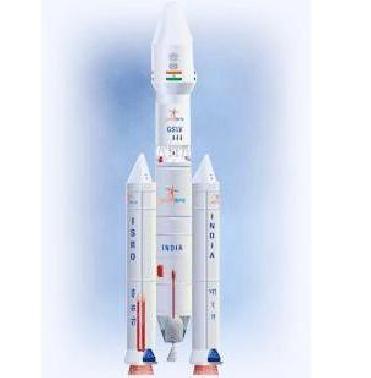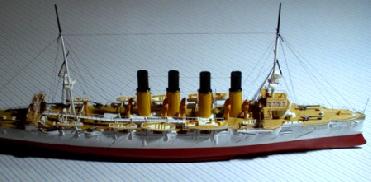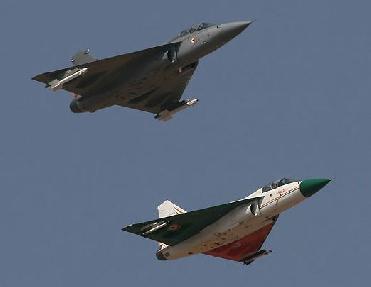
An artist's rendition of the Geosynchronous Satellite Launch Vehicle Mark III. ISRO Photo.
CHENNAI (PTI): India Sunday successfully conducted static testing of its largest solid propellant booster, S200, which will form the strap-on stage for the GSLV-Mk III launch vehicle being developed for putting heavier satellites in space.
S200 is the third largest solid booster in the world after the RSRM solid booster of Space Shuttle and P230 solid booster of European rocket ARIANE-5.
"Solid propellant booster Rocket Stage S200 underwent the test at Satish Dhawan Space Centre in the spaceport of Sriharikota, 80 kms northwest of Chennai," ISRO said in a statement.
The GSLV Mk III will make India fully self reliant in launching heavier communication satellites of INSAT-4 class weighing 4500 to 5000 kg, besides enhancing capability to be a competitive player in the multimillion dollar commercial launch market.
The S200 solid booster, which will form the strap on stage for GSLV-Mk III, contains 200 tonnes of solid propellant in three segments.
The design, development and successful realisation of S200 solid booster were a "pure" indigenous effort involving Vikram Sarabhai Space Centre, Thiruvananthapuram, and Satish Dhawan Space Centre, Sriharikota, with participation of Indian Industries, the ISRO said.
During the test, the S200 booster was fired for 130 seconds and it generated a peak thrust of about 500 tonnes, the statement said adding, its performance was exactly as predicted.
Nearly 600 health parameters were monitored during the test and the initial data indicated normal performance.
The successful test of S200 is a major milestone in the solid rocket motor programme of ISRO and a vital step in the development of GSLV -Mk III, the statement said.
 Previous Article
Previous Article Next Article
Next Article













The Indian Air Force, in its flight trials evaluation report submitted before the Defence Ministry l..
view articleAn insight into the Medium Multi-Role Combat Aircraft competition...
view articleSky enthusiasts can now spot the International Space Station (ISS) commanded by Indian-American astr..
view article